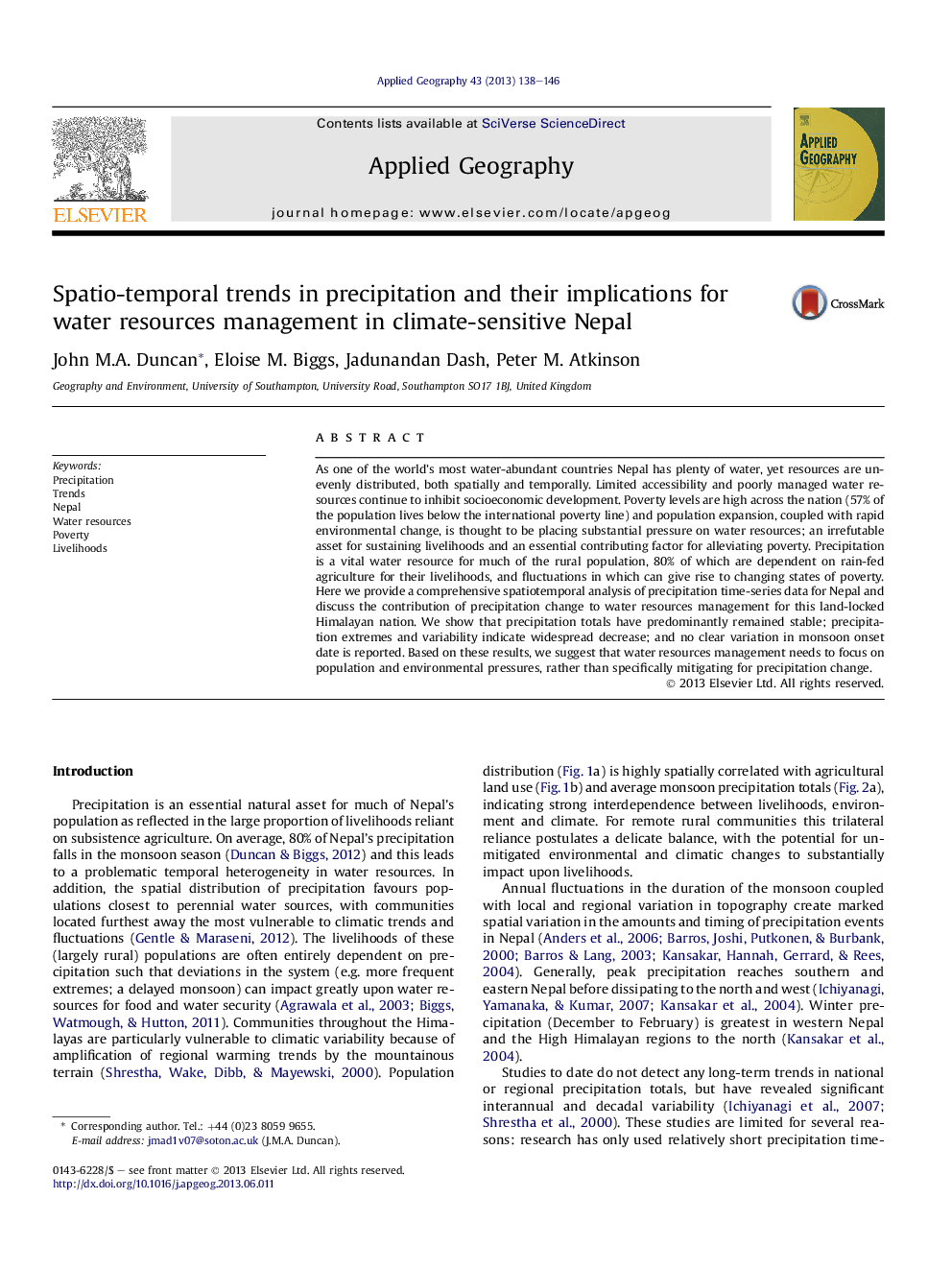| Article ID | Journal | Published Year | Pages | File Type |
|---|---|---|---|---|
| 6538862 | Applied Geography | 2013 | 9 Pages |
Abstract
As one of the world's most water-abundant countries Nepal has plenty of water, yet resources are unevenly distributed, both spatially and temporally. Limited accessibility and poorly managed water resources continue to inhibit socioeconomic development. Poverty levels are high across the nation (57% of the population lives below the international poverty line) and population expansion, coupled with rapid environmental change, is thought to be placing substantial pressure on water resources; an irrefutable asset for sustaining livelihoods and an essential contributing factor for alleviating poverty. Precipitation is a vital water resource for much of the rural population, 80% of which are dependent on rain-fed agriculture for their livelihoods, and fluctuations in which can give rise to changing states of poverty. Here we provide a comprehensive spatiotemporal analysis of precipitation time-series data for Nepal and discuss the contribution of precipitation change to water resources management for this land-locked Himalayan nation. We show that precipitation totals have predominantly remained stable; precipitation extremes and variability indicate widespread decrease; and no clear variation in monsoon onset date is reported. Based on these results, we suggest that water resources management needs to focus on population and environmental pressures, rather than specifically mitigating for precipitation change.
Related Topics
Life Sciences
Agricultural and Biological Sciences
Forestry
Authors
John M.A. Duncan, Eloise M. Biggs, Jadunandan Dash, Peter M. Atkinson,
